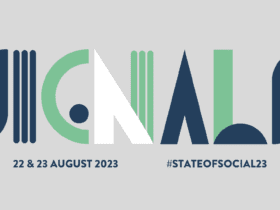If you want your brand to be around beyond the next decade, it’s time to focus on influence, warns Kim McKay.
Actually, the founder of Klick X — one of the Asia-Pacific region’s most awarded communications agencies — says she’d be focusing on “little elseâ€.
“The complete shift is that, in the last 12 years, we’ve gone from brands having the power to consumers having all the power. Employers had the power, and now employees have all the power,†she told attendees at the State of Social conference in Perth last month.
“So if you’re in the business of wanting to recruit or retain customers or employees, then influence is what you’re going to need to have a business in the future.â€
Influence is the ability to have an effect on an outcome including, for example, an influence on consumer behaviour.
In a world where technology is changing at a rapid pace, entire industries and business models are being disrupted, and consumer trust is at an all-time low for many sectors (including marketers), Kim McKay said, “there’s nothing more important for a business that wants a future than influence.â€
“The benefit of influence is that people will buy more things from you, more often; as a result of that they will be advocates for your brand and they’ll be more loyal, and that’s going to give you a disproportionate share of voice amongst your competitors.â€
The hallmark example of this is Apple – a company whose products we often consume without even shopping around.
So, how do brands achieve influence? There are three ingredients, according to Kim McKay.
Firstly, impact: making sure a brand is seen and heard and understanding how it is perceived.
“The idea needs to be big, not the budget,†she said. “Something new, a world-first, can generate a huge amount of coverage and a disproportionate share of voice.â€
Secondly, interaction: offering the customer a relationship beyond the basic transaction.
“Focus on your strengths,†McKay said. “Think about something you already do well and ask how you can use that to make a customer for life, and make that the peak experience.â€
And lastly, innovation: which is how a brand evolves. Crucially, innovation isn’t just about creating something “newâ€; it’s about being relevant to your customers, too.
McKay said Wrangler was a good example of this. The jeans company has just released their first pair of “green†blue jeans, which use 60 per cent less water and energy in the dying process.
“It’s relevant to their customer base, who really want sustainable clothing,†McKay said.
According to McKay, brands that get the formula right — impact, interaction and innovation — will have a life beyond 2029. Those that do not, will disappear.
Stay tuned for more information on the next State of Social conference here.







LET’S CONNECT